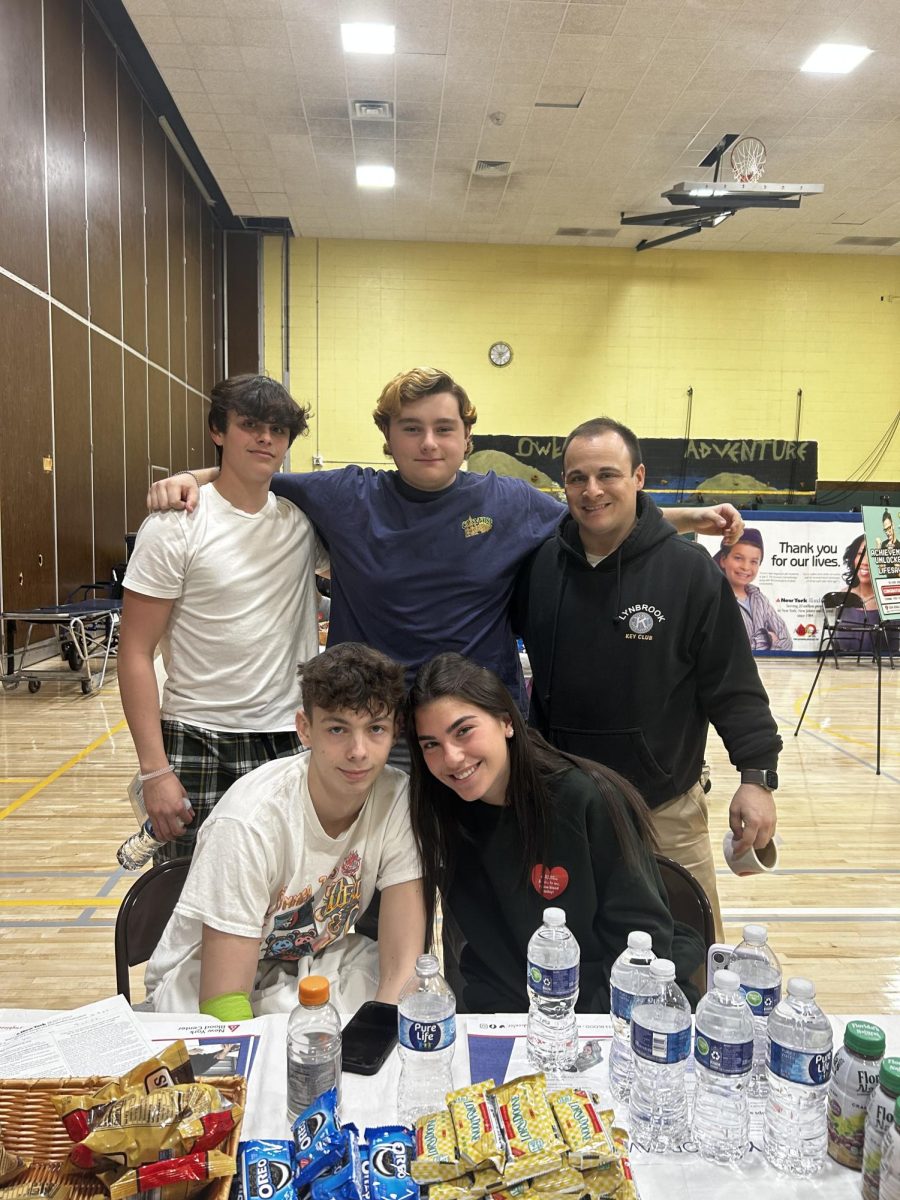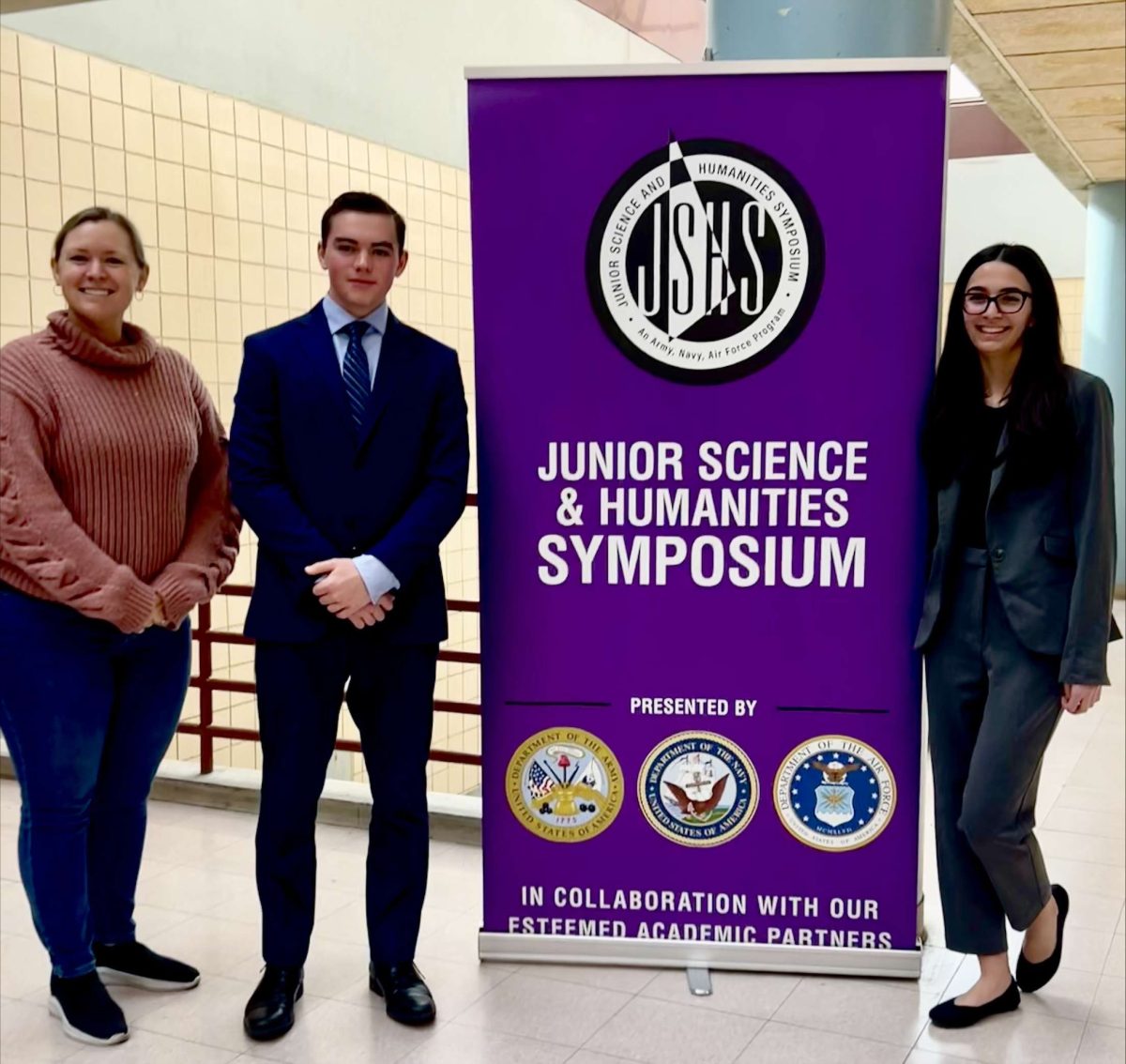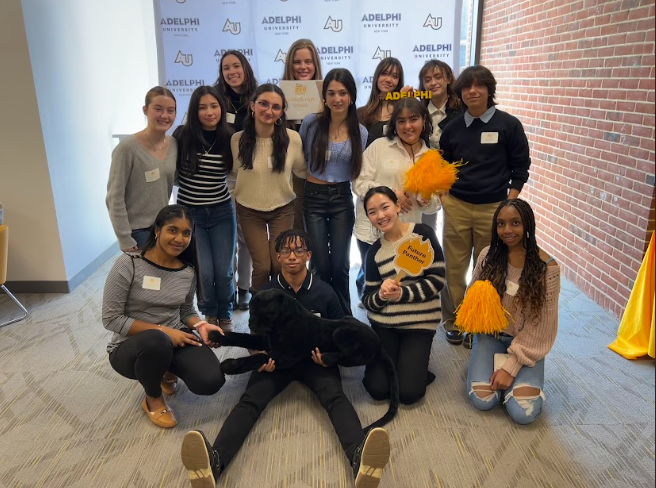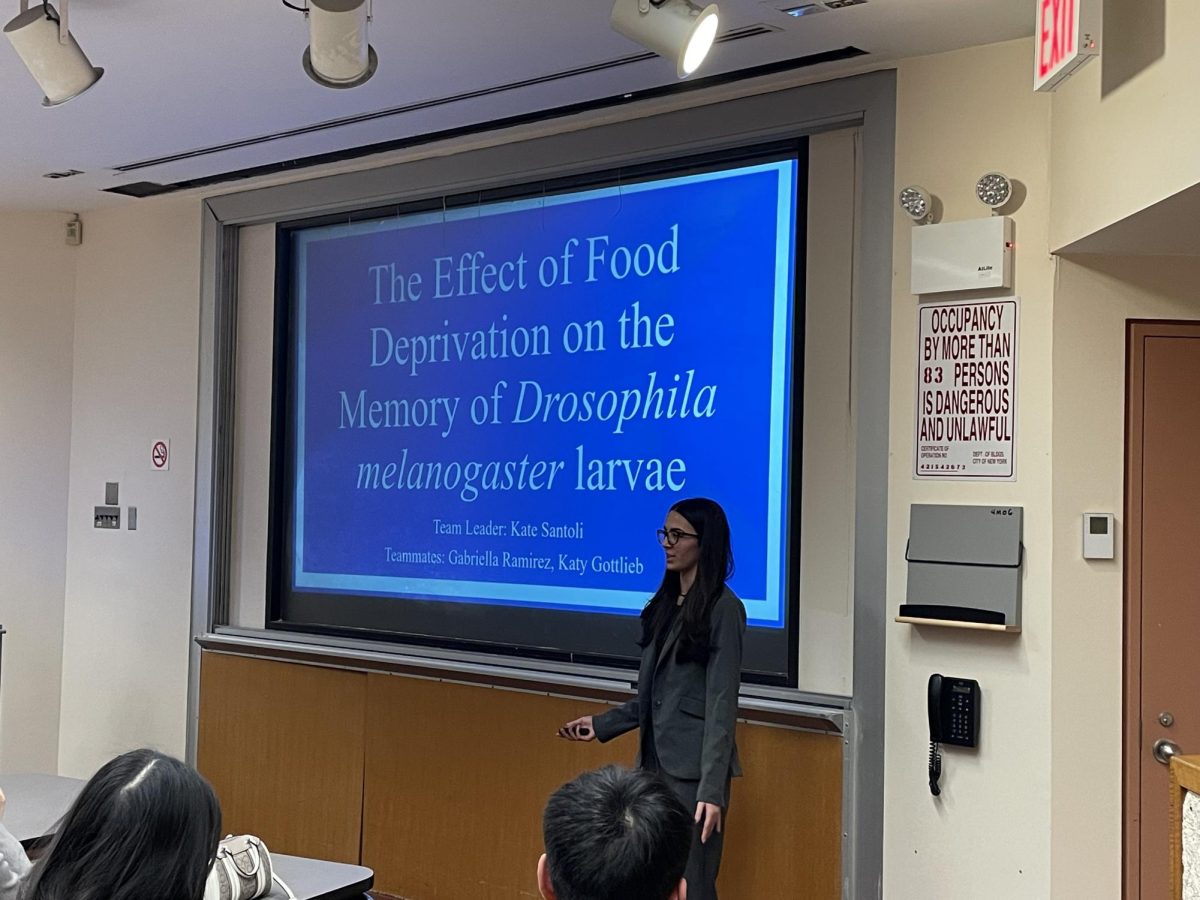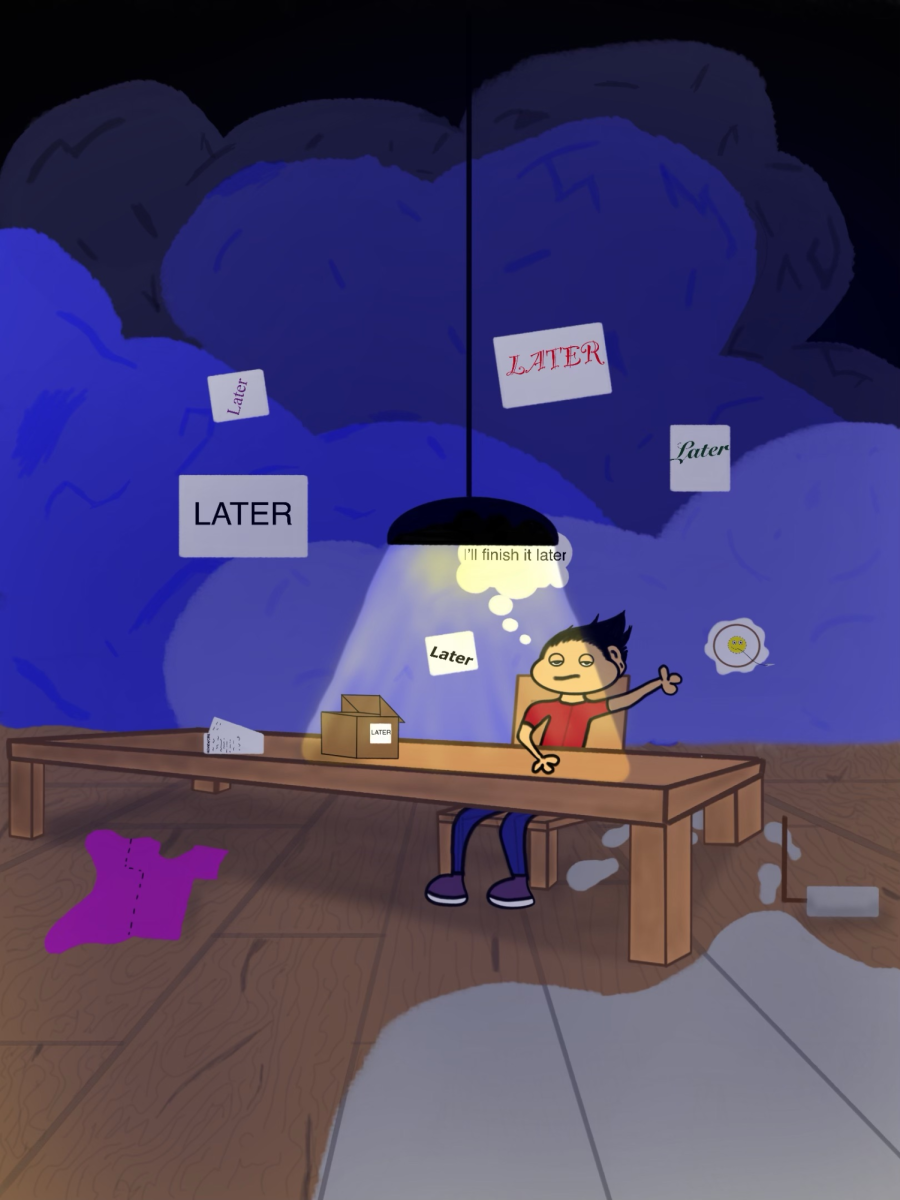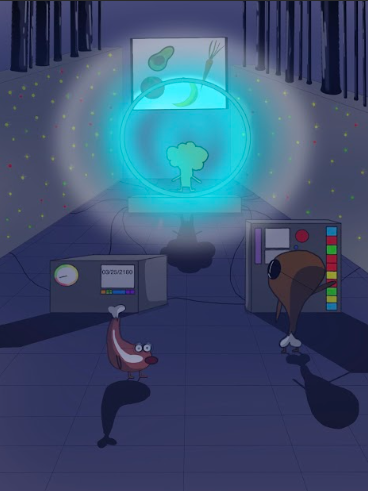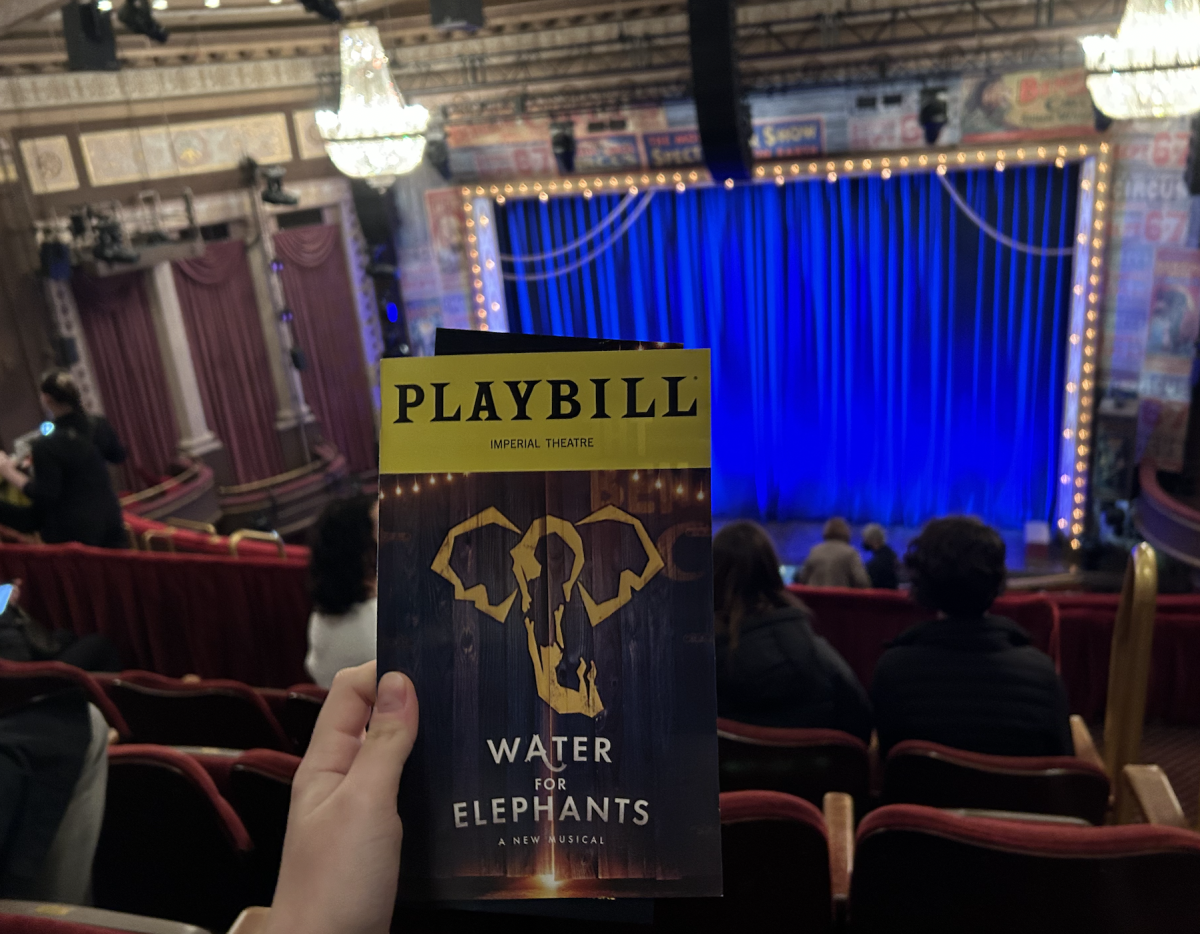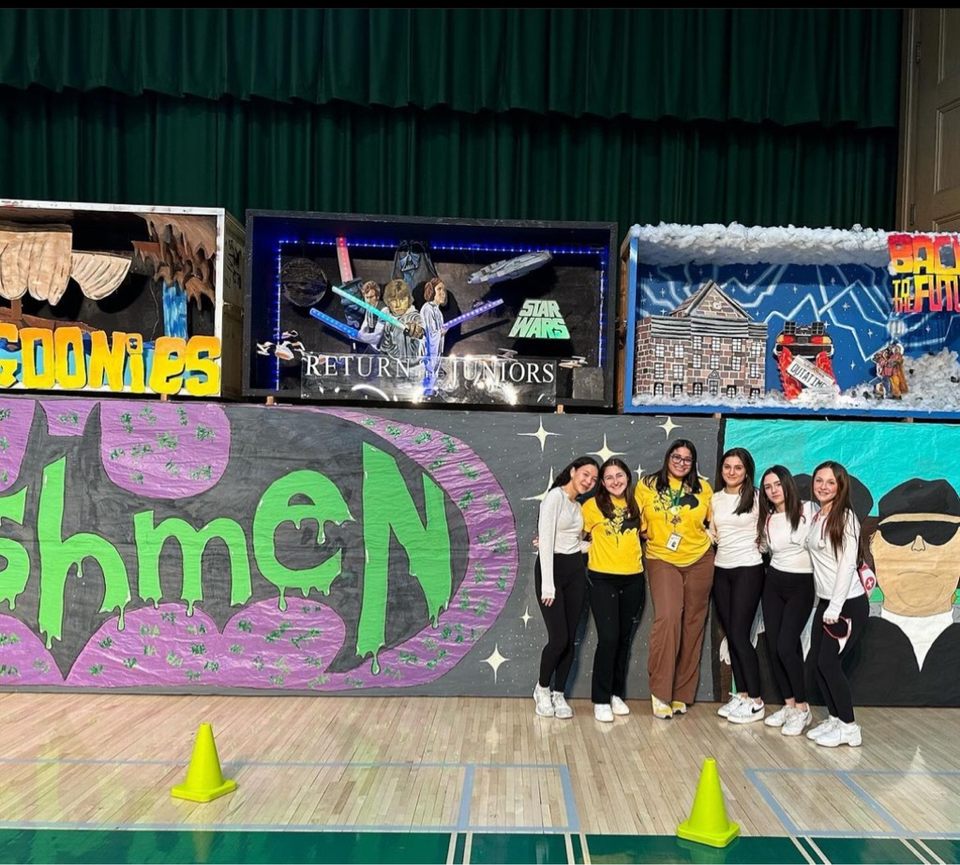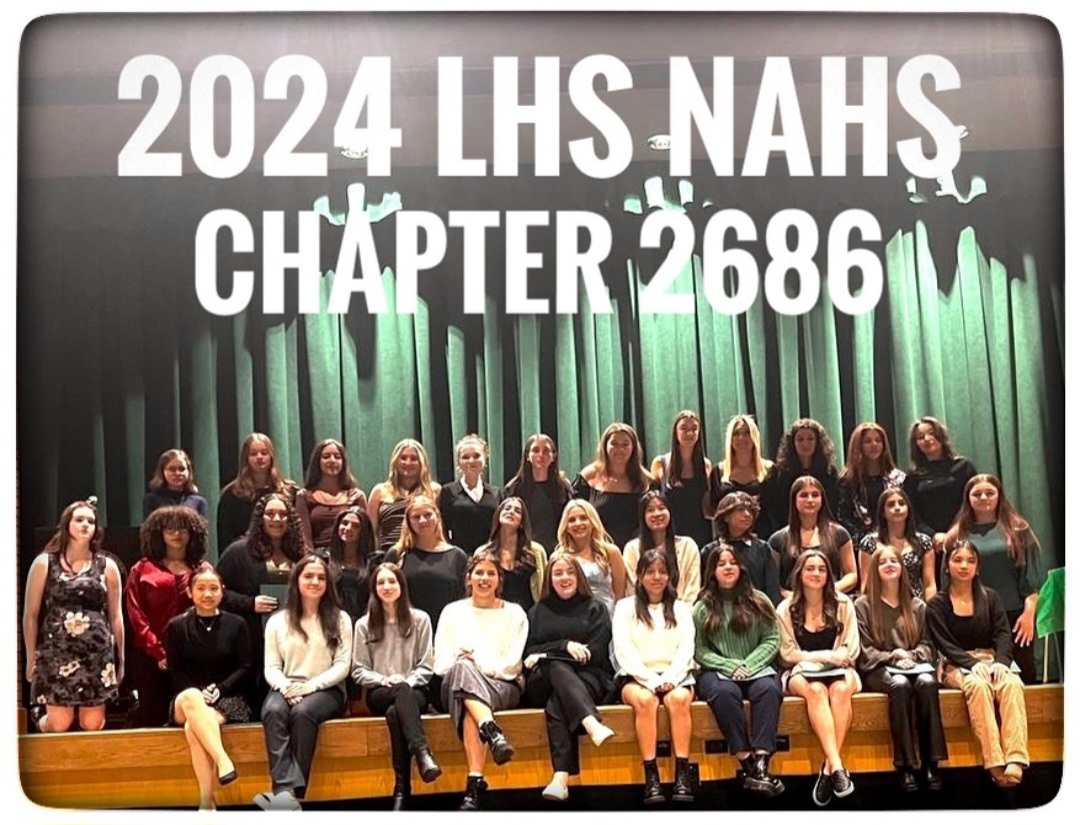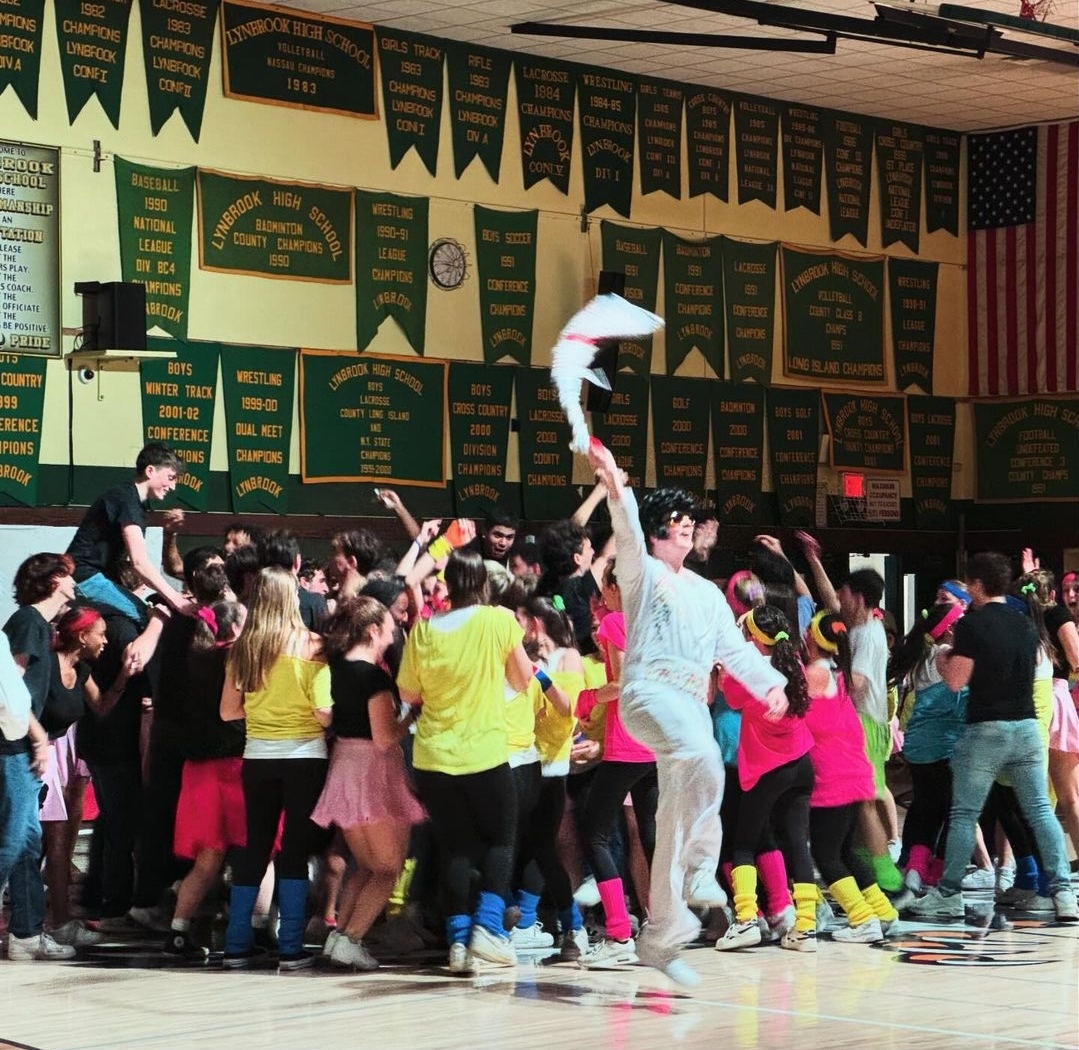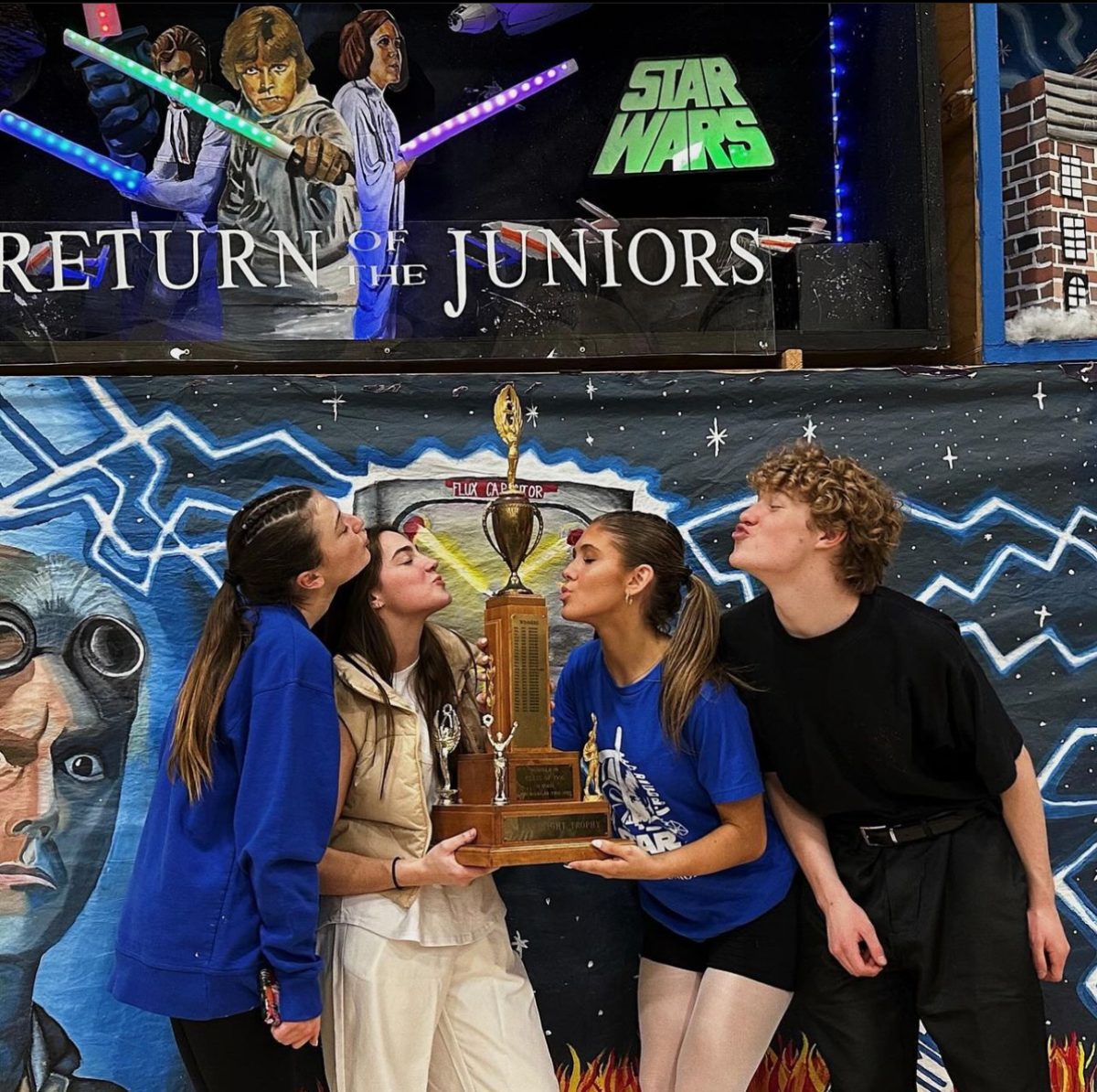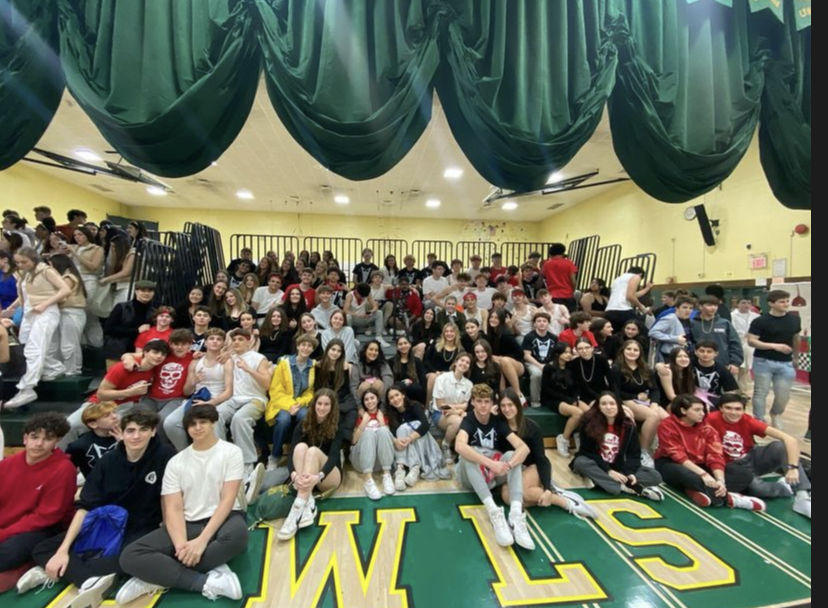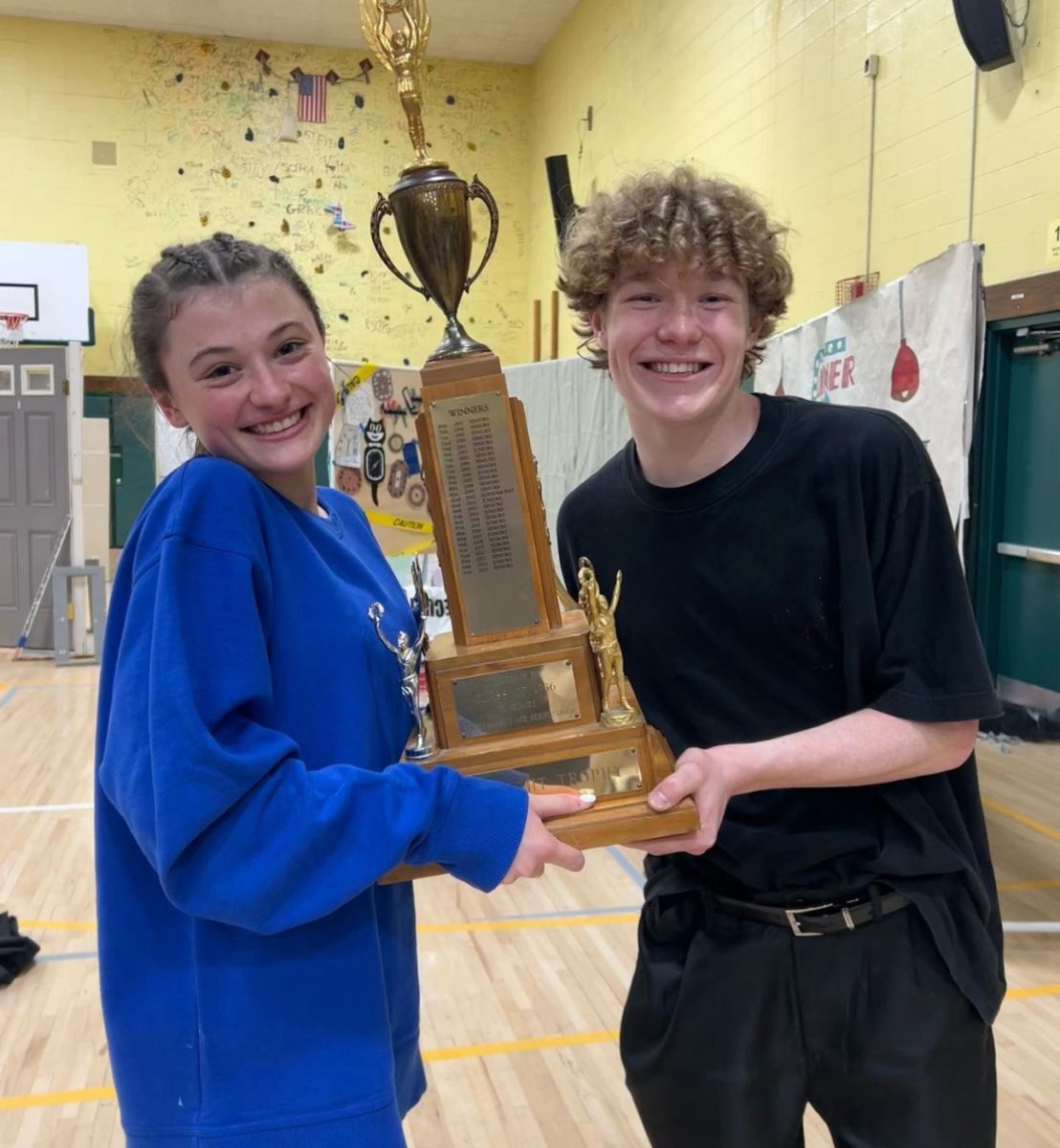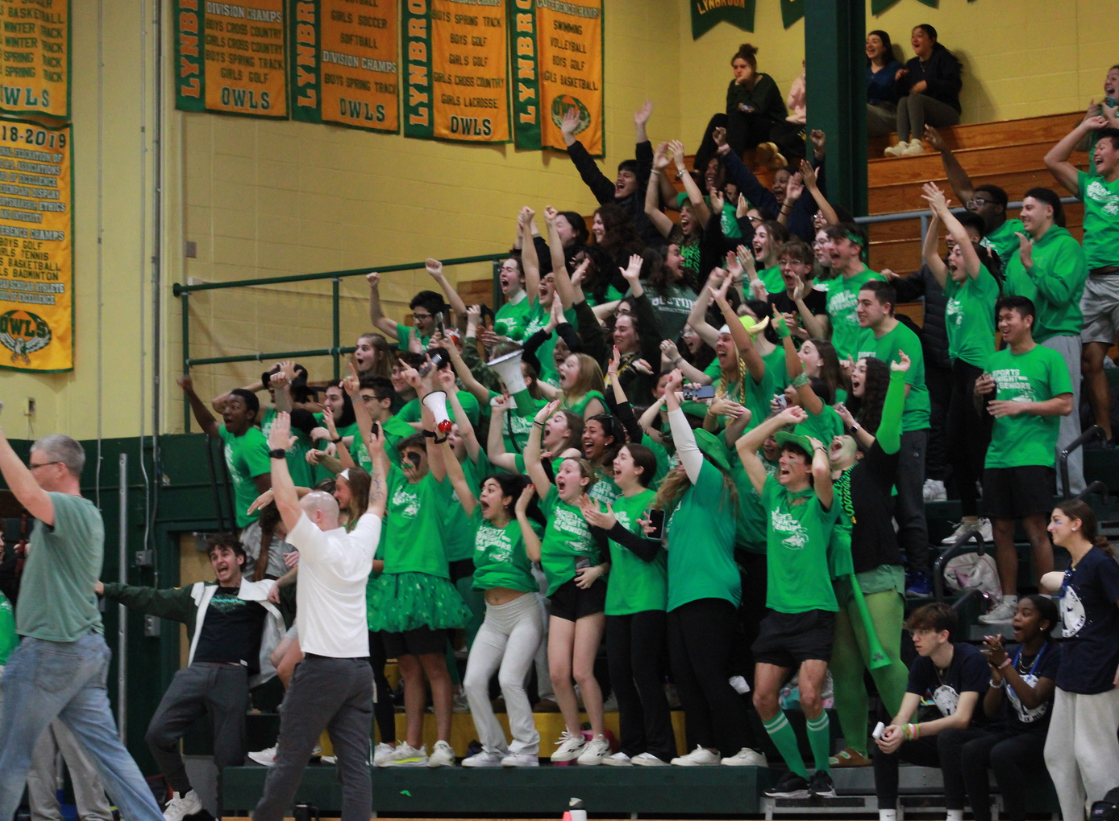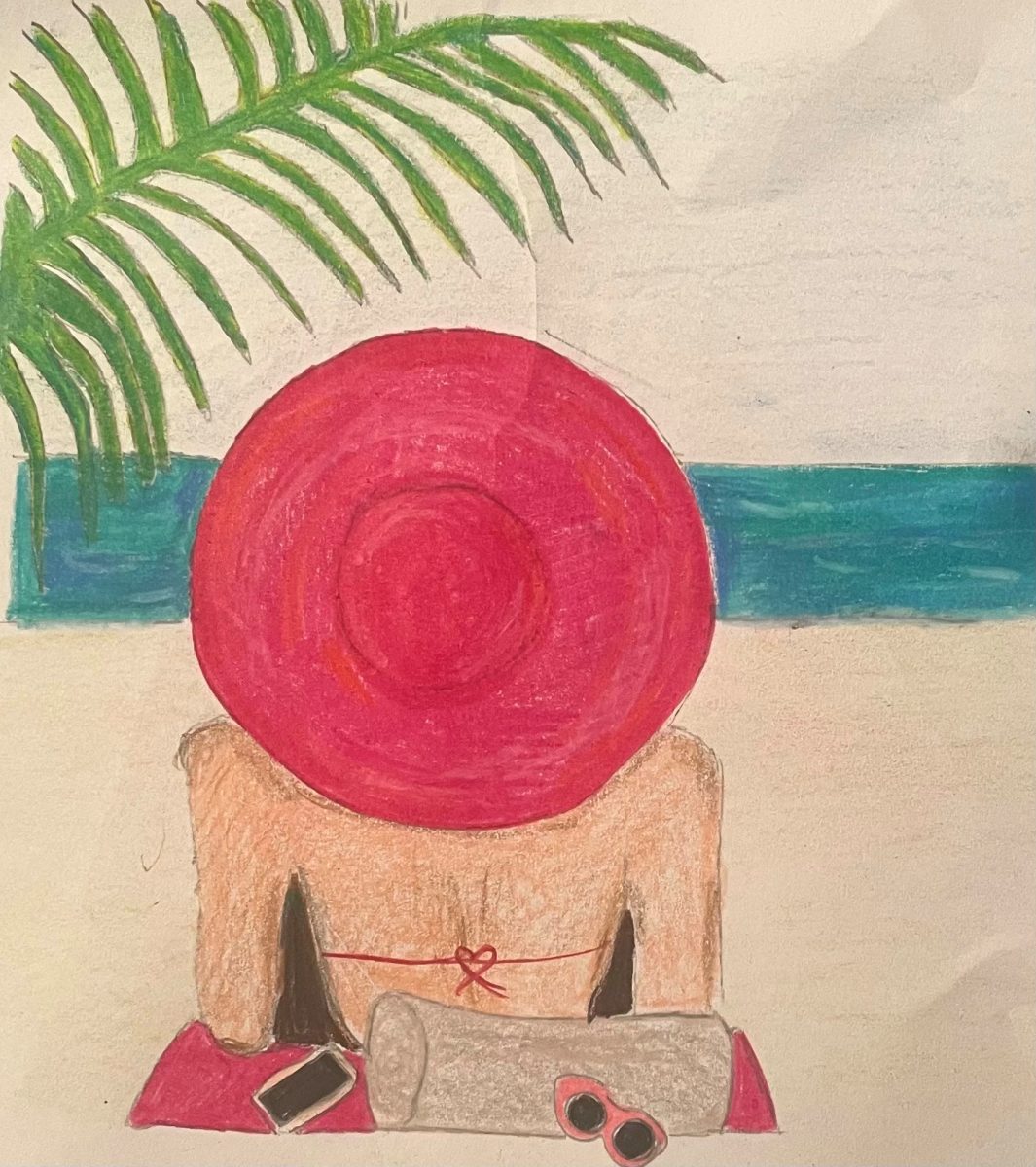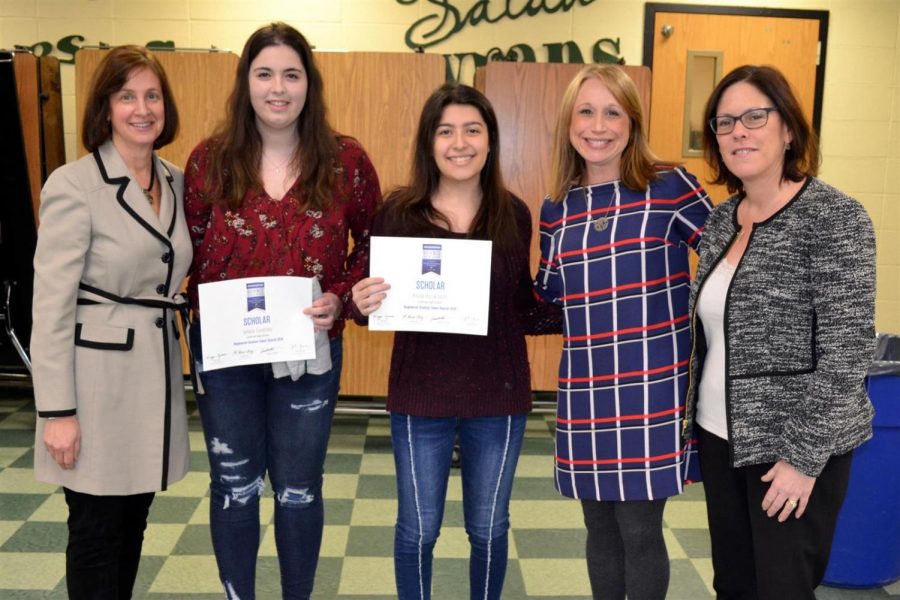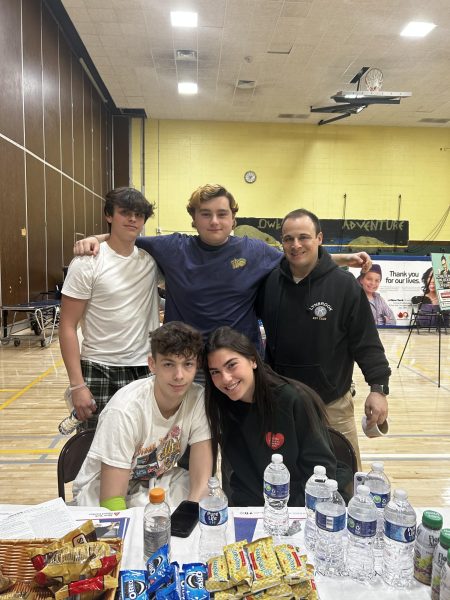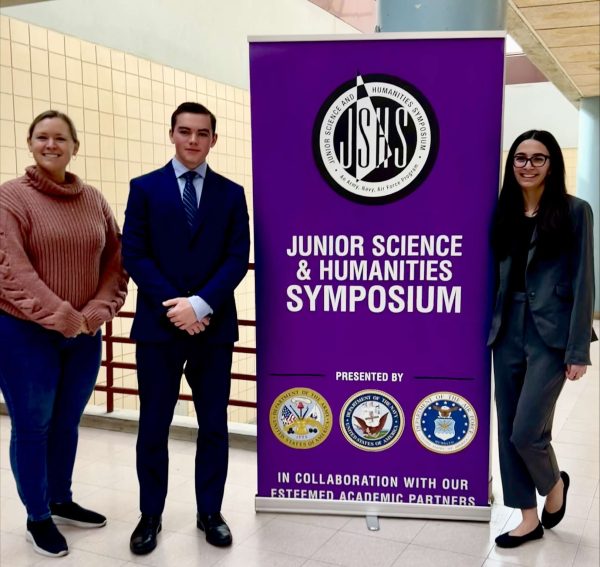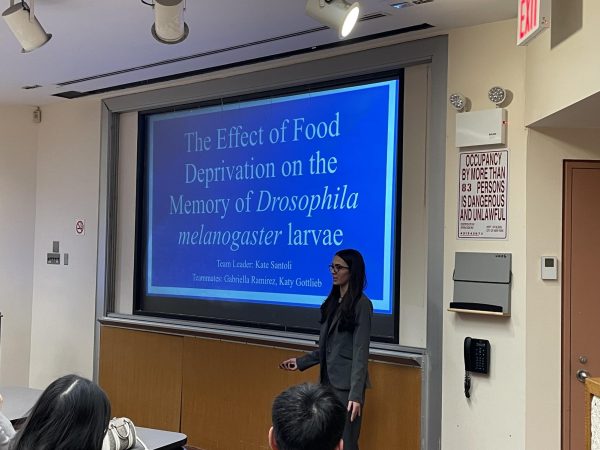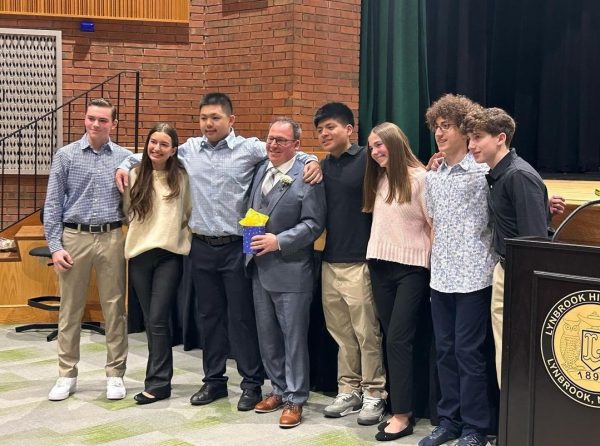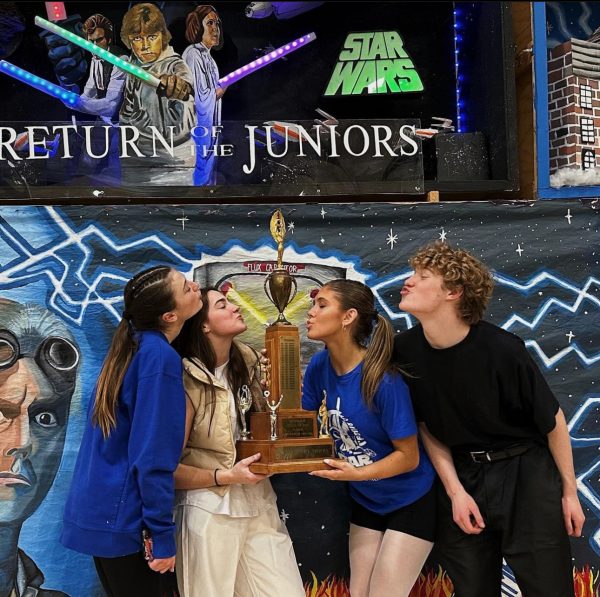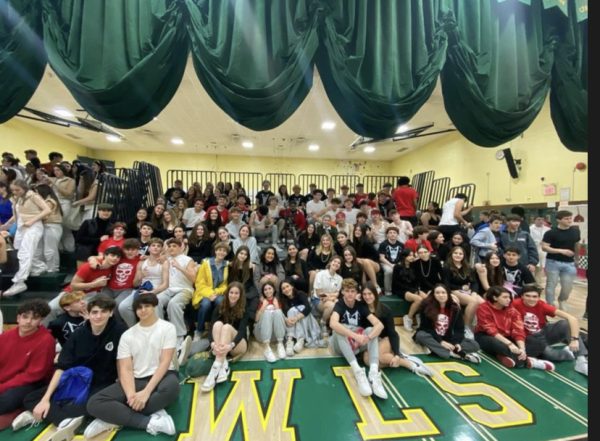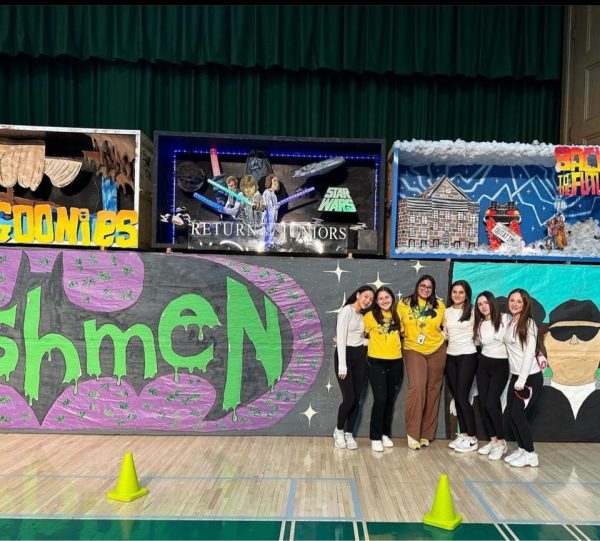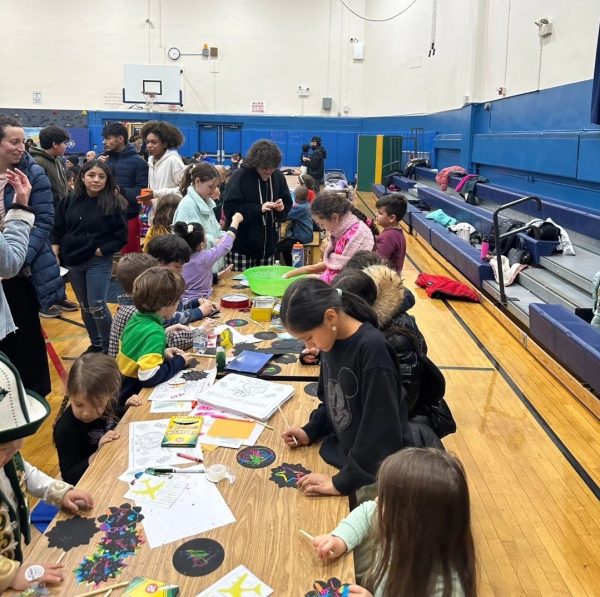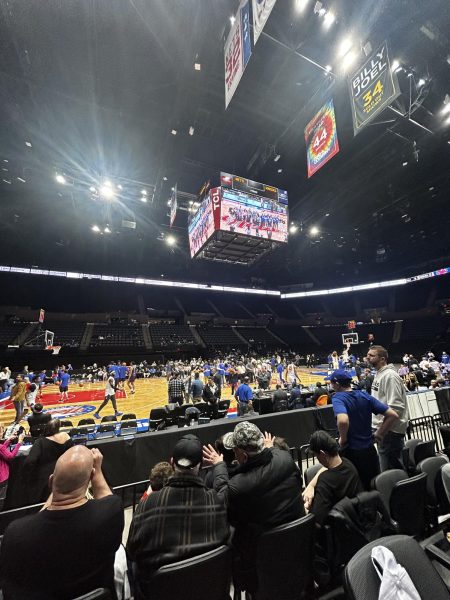Science Research Celebrates Two Regeneron Scholars
Three hundred young scientists of the 1,964 participants were named semifinalists in the 2019 Regeneron Science Talent Search, the oldest and most respected research competition for high school students in the United States on Jan. 9. Of the 53 Long Island students who earned this honor, two are LHS’s own, seniors Kaylie Hausknecht and Juliana Condoleo.
Hausknecht and Condoleo have been involved in LHS’s Science Research program since they were freshmen. The program, led by teachers David Shanker and Charles Vessalico, prepares students to delve into the advanced fields of science by familiarizing students with research techniques, laboratory experience, and competing in prestigious contests. The four-year program culminates in each senior student submitting a final research paper to the Regeneron Competition. The competition, founded in 1942, aims to recognize bright, young scientists whose research can be used to combat pressing threats in society. It was originally named the Westinghouse Science Talent Search, but Intel took over sponsorship of the competition between 1998 and 2016, and finally Regeneron, a biotechnology company based in Eastview, New York, took over the rights to the competition and more than doubled the prize money awarded to winners. Each of the 40 finalists, which were announced on Jan. 23, are guaranteed a minimum of $25,000, with the top student earning $250,000.
In the Lynbrook Science Research class’ 20 years, only nine students have been named Science Talent Search semifinalists. Prior to Hausknecht and Condoleo, the last to win the accolade, Andrew Meersand, graduated in 2016. Impressively, of those nine LHS semifinalists, seven have been women. According to a Catalyst article (catalyst.org) entitled, “Women in Science, Technology, Engineering, and Mathematics (STEM),” a 2015 study revealed that women account for only 24% of STEM workers. Often, women feel discouraged from working in STEM since it is a male-dominated environment; thus, promoting female participation in these fields can allow for their innovative ideas to be represented. Member of the junior Science Research class Arpie Bakhshian stated, “In science research, everyone is supported regardless of their gender, race, or religion. Currently, nine out of ten members of our junior class are females, which shows the class’ dedication towards diversifying STEM.” Considering the substantial achievements women have found in science research here at LHS, the program serves to motivate women to enter into influential fields. Science Research Teacher David Shanker stated, “We should be proud as a district that we encourage the underrepresented.”
Hausknecht and Condoleo’s success especially unprecedented as it marks the first time in LHS history that two students in one year have been selected as semifinalists in the highly selective competition. In fact, LHS had more Regeneron Scholars than 24 states, several of which had either zero or one participant named as a scholar. Considering LHS does not have the same access to resources that high schools on Long Island’s North Shore have, since laboratories like Northwell Help and Stony Brook University are farther from Lynbrook, it is easier for students at other schools to get internships. Thus, just one student succeeding in the Regeneron competition is all the more impressive at LHS, let alone two students in the same year. Junior Maria Russotti, who has also been involved in the research program since her freshman year, stated, “Just submitting to the Regeneron competition is our final goal as students in Science Research due to the immense work and determination a project demands. Kaylie and Juliana being named semi-finalists is extraordinary, and I am happy that their hard work was recognized.”
Much of Condoleo’s and Hausknecht’s accomplishments in the Regeneron Competition can be attributed to their deep involvement in Science Research and guide work this past summer. Hausknecht stated, “I was encouraged to always ask questions and to be ambitious and creative in the ways I go about answering them. Through this program, I was able to explore areas of science that I probably would have never otherwise been exposed to, like number theory and condensed matter physics.” In addition to expanding one’s knowledge into different realms of science, the research program teaches students valuable skills that were critical to both Condoleo’s and Hausknecht’s success. Condoleo stated, “Both Shanker and Vessalico have provided me with the foundations and skills to conduct research in a professional lab setting, have guided me through the process of finding a mentor, have helped in preparing my presentation, and in writing my paper.”
Condoleo’s research developed after working for two summers at Farmingdale State College under the mentorship of Dr. Lisa Prazak-Stockwell on her project entitled, “Investigating the Novel Role of the Activated Cdc-42-Associated Tyrosine Kinase (ACK1) in Learning and Memory using a Dack Null Allele in Drosophila melanogaster.” Her project utilized techniques she learned in her freshman year research class, where she tested memory in fruit flies, an organism that can act as a model to predict human behavior. Condoleo applied the skills she learned to her Regeneron project, in which she examined the role a type of protein, kinase ACK1, had on learning and memory in a fruit fly. She specifies, “The kinase is best known for its role as a cancer-causing agent because it leads to cell growth. Some research suggested that it could also possibly play a role in neuronal growth, so my research sought to investigate its potential role in learning and memory, and I found that when the kinase is not properly produced, it leads to a learning deficiency, establishing a novel role for the kinase.” Condoleo plans to further her interest in science at Johns Hopkins University, where she will be attending in the fall with an intended major of neuroscience on a pre-med track.
Meanwhile, Hausknecht began her research this past summer at the Hoffman Laboratory at Harvard University. Here, she worked on a physics project entitled, “Disentangling Spatial Correlations in Homogenous Materials Which Shift in Varying Networks.” She clarifies, “My project centers around developing methods to integrate artificial intelligence into data analysis in the field of condensed matter physics. I created a machine learning algorithm that allowed me to uncover details about an important structure in cuprate superconductors.” Hausknecht has continued her work, despite being hours away from her laboratory, by video chatting her mentors weekly, and she plans to present her research at an American Physical Society (APS) panel of professionals in the field in March. This summer, she will return to the laboratory to further develop her project. Hausknecht hopes to continue working with artificial intelligence in the future as she states, “I think that using artificial intelligence at the interface of physics will help us expand our realm of knowledge by allowing us to uncover features of data that were previously too complex for human-made algorithms to analyze.” In the fall, Hausknecht plans to attend Harvard University, studying both mathematics and physics.
Hausknecht’s and Condoleo’s accomplishments have earned them $2,000 each as well as $4,000 going to LHS for improvements in the science, technology, math, and engineering departments. While the money is certainly favorable and deserved, success in the Regeneron Competition truly signifies recognition of invaluable real-world applications that students’ projects can have and acknowledgement of the dedication each applicant puts into his/her project. Shanker stated, “While most students spend offtime and summer enjoying themselves, we have students go to laboratories on Long Island, in the city, and some will even live in different cities.”
Though most are unfamiliar with what occurs in LHS’s Science Research class, it genuinely helps to produce some of the brightest, most successful students. Shanker stated, “It is rewarding to know that so many of our students are professionals in science, business, and law. Skills that helped them become successful were developed here in the high school.” Ultimately, the work of Science Research Teachers David Shanker and Charles Vessalico helps to encourage participation in STEM fields and implement scientific solutions to threatening issues, epitomized in Condoleo’s and Hausknecht’s success in the Regeneron Competition. As Hausknecht describes it, “Science Research has really defined my high school experience, and it has also crystallized my trajectory for the future.”

